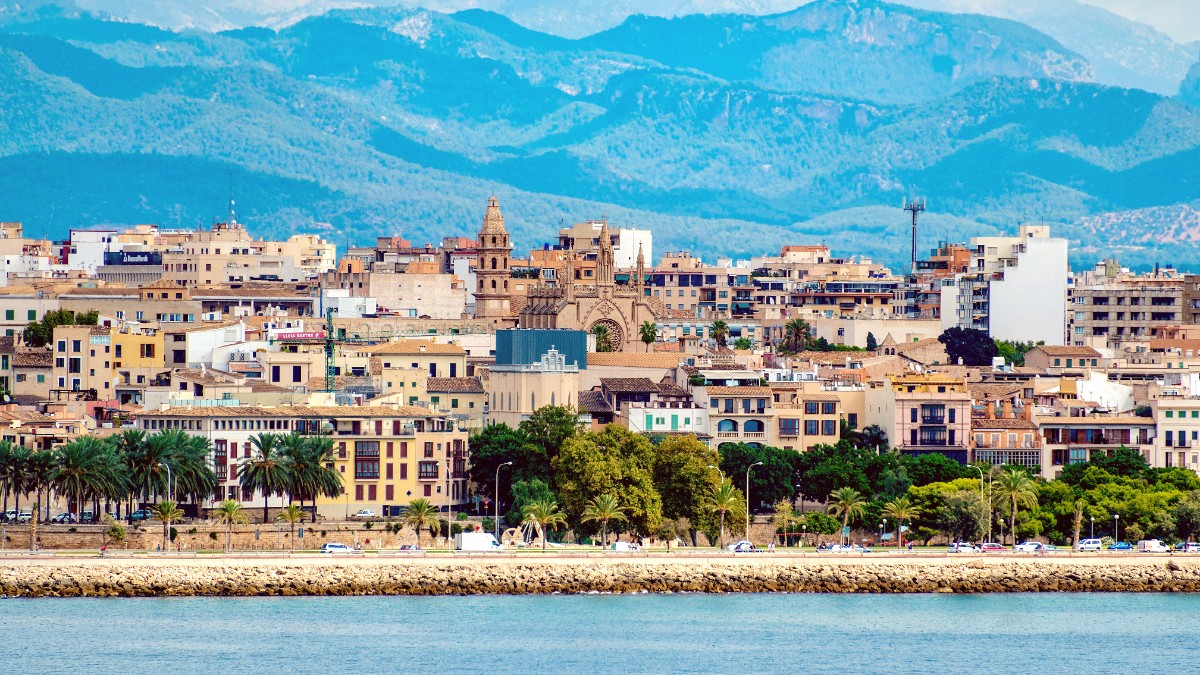
Spain
Mallorcan cooking reflects centuries of diverse influences, including Roman, Moorish, and Catalan. The island’s self-sufficiency historically featured a diet rich in pork, seafood, and local produce.
Staple ingredients include olive oil, garlic, fresh tomatoes, various peppers, eggplant, and almonds. Fresh fish and seafood are abundant. Herbs like rosemary and thyme are common, and paprika features in cured meats.
Mallorcan cuisine shares similarities with Catalan and other Balearic Island cuisines. Many dishes incorporate sobrassada (cured, spreadable sausage) or botifarró (blood sausage).
Palma's markets are hubs for discovering regional variations and fresh produce.
Many restaurants present a "Menú del Día" (menu of the day) at lunchtime, a fixed-price meal with courses, a drink, and bread. Evening meals are typically à la carte. Dining is a leisurely, social event.
A flavorful stir-fry dish with lamb, potatoes, red peppers, onions, and fennel. A representation of rustic island cooking.
Found in traditional Mallorcan restaurants.
A delicious vegetarian dish resembling ratatouille, with layers of potatoes, eggplant, and red peppers, topped with tomato sauce.
Serves as a side dish or light main course.
A spiral-shaped pastry, light and airy, dusted with powdered sugar. Can be plain or filled.
A breakfast or snack must-try, available at bakeries and the airport.
Mallorca produces excellent local wines (red, white, rosé) from several Denominations of Origin. Hierbas is an herbal liqueur, and Palo is a dark, bitter-sweet aperitif.
Gató d'ametlla is a light, gluten-free almond cake, often served with almond ice cream (gelat d'ametlla). Fresh orange juice (from Sóller) and horchata (tiger nut drink) are popular non-alcoholic choices.
Palma features several Michelin-starred or Bib Gourmand restaurants, presenting contemporary Mallorcan or international cuisine with refined service.
This category features many options, from traditional Spanish and Mallorcan eateries (Cellers) to modern bistros.
Affordable options include markets and local bakeries.
Awareness and availability are growing, especially in modern or health-conscious restaurants. Many traditional dishes, like tumbet, are naturally vegetarian.
Look for plant-based options on menus.
Gluten-free (Sin gluten) and other allergen awareness is increasing. Menus often mark allergens, or staff can guide you.
Carrying an allergy translation card in Spanish can greatly assist communication.
Dedicated options are limited. Inquire in advance.
Online forums, specialized apps (e.g., HappyCow), and review sites help locate suitable restaurants.
Clear communication with restaurant staff is helpful.
Palma's culinary scene is increasingly aware of diverse dietary needs.
Some restaurants feature rooftop dining with city views, or unique settings within historic courtyards, creating a memorable atmosphere.
These settings elevate the dining experience.
For an authentic experience, seek out a "celler" - a traditional Mallorcan restaurant, often in a cellar, serving hearty local dishes.
A deep dive into local culinary tradition.
For an organized culinary exploration, platforms like GetYourGuide feature local food tours. These tours often take you to hidden culinary gems and street food spots, and may include cooking classes.
Visit Mercat de l'Olivar for fresh ingredients and to observe local life. Many stalls prepare food on-site.
Several companies in Palma feature cooking classes focused on Mallorcan cuisine.
Explore Palma's gastronomic scene by visiting various tapas bars, markets, and specialty food shops.
Opportunities exist to visit olive oil mills, wineries, or almond farms in the island's interior.
For an authentic experience, seek out a "celler" – a traditional Mallorcan restaurant, often located in a cellar.
These establishments serve hearty local dishes.
Mercat de l'Olivar is a great spot to experience authentic local life, grab a coffee, or enjoy tapas from its many stalls.
A true taste of daily Palma.
Seasonal festivals celebrate the island's olive oil production, offering tastings and local products.
Events highlight Mallorca's famous almond harvest, featuring almond-based dishes and products.
Fairs dedicated to the traditional Mallorcan cured sausage, often with tastings and local crafts.
Don't hesitate to ask local vendors at markets or small eateries for recommendations. They often share insights into the freshest products and best dishes.